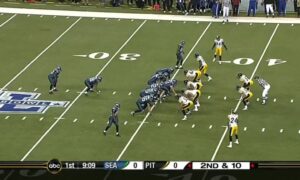After two straight seasons of equivalent wins and losses, it’s certainly no surprise that the front office of the Pittsburgh Steelers has been busier and more active than usual in their efforts to reshape a middling roster into a true competitor.
The past few months could be fairly described as a season of change amid the shifting fates of a franchise that had just been to the Super Bowl three times in the very recent past. It may well be that past success that has helped drag them down of late.
Of course, selecting late in the draft annually doesn’t help, nor do the big contracts going out to the players that helped you reach that success. But the true death knell has been an unwillingness to recognize when to let go.
The Steelers had hoped to hold together that championship core for a while longer, but the last two seasons have been the wake-up call necessary to introduce the wave of change that we’ve seen this offseason, designed to steer the organization back in the right direction.
What bigger change can you ask for than swapping out an aging, slowing 30-something linebacker for a 21-year-old linebacker with stellar speed for the position? That’s exactly what the Steelers have done this year.
In fact, the team knew that it was time to move on from Larry Foote well before they had any idea that they would have the opportunity to draft his replacement. The Steelers released him on the eve of the new league year, in part to help get under the salary cap.
Foote became a full-time starter in his third season, starting every game for five straight seasons before joining the Lions for one season. He came back to the Steelers as a backup in 2011, starting five games in the process, and then resumed his starting duties in 2012, where he hardly missed a snap.
2013 was another matter. He was lost for the season in the opener, just a year after registering a career-high 113 tackles, and tying his four-sack mark first set in 2006.
Though he put up good numbers in 2012, however, it wasn’t necessarily indicative of his performance. Combined with an arm injury that the front office may have questioned his ability to fully recover from, and the promising start that Vince Williams had as a rookie—not to mention the sense that Sean Spence would be back—it just made sense for the team to part ways.
But nobody was likely expecting that his replacement would be rookie Ryan Shazier. Even if he were drafted, it’s extremely rare for a rookie to start on the Steelers’ defense, barring injuries of course. The last to do it the hard way was Kendrell Bell.
Shazier’s injection into the starting lineup is of little surprise, given that his skill set would appear to fit so well into rectifying some of the defense’s key weaknesses from a year ago. That and the fact that he comes from a college program with which the Steelers are very familiar are what will help him break with tradition by becoming the first rookie to start a season for Dick LeBeau since returning to Pittsburgh.







